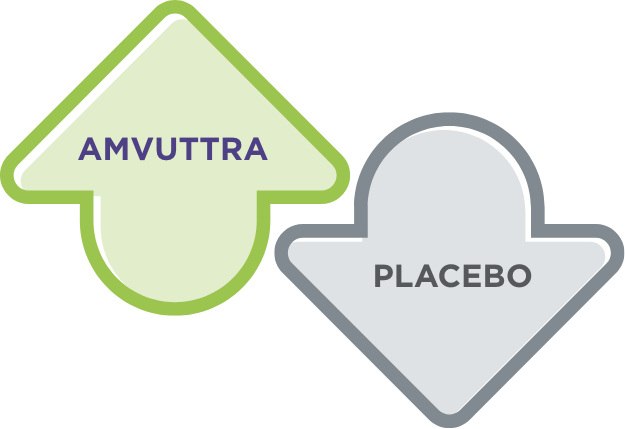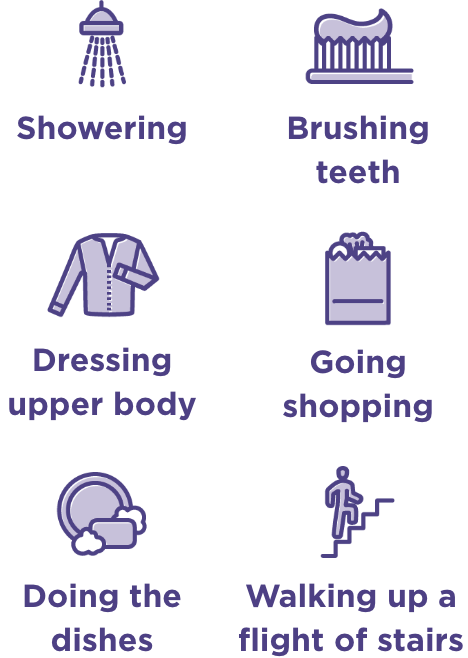

“After a discussion with my doctor, I thought AMVUTTRA® would be the best treatment for me.”
—STEVE, treated with AMVUTTRAResults With AMVUTTRA
Patients treated with AMVUTTRA showed significant improvement in nerve function and quality of life at 9 months, and continued to improve throughout an 18-month study of 164 adult patients, while those who received placebo in a similar study had worse nerve function and quality of life.
Nerve function
Quality of Life/p>
Choose below to see:

At 9 months, AMVUTTRA significantly improved nerve function while patients who received placebo had worse nerve function.
At 18 months, 48% of patients who received AMVUTTRA regained some nerve function from the start of treatment while 4% of those who received placebo regained some nerve function.
- For the patients who received AMVUTTRA and did not regain some nerve function, progression of their neuropathy was slowed while the neuropathy of those who received placebo worsened
Nerve function was assessed using a scale called mNIS+7 that measured strength and sensation in the hands, feet, arms, and legs; reflexes; and blood pressure upon standing.

At 9 months, AMVUTTRA significantly improved quality of life while patients who received placebo had a worse quality of life.
At 18 months, 57% of patients who received AMVUTTRA reported better quality of life from the start of treatment, while 10% of those who received placebo reported better quality of life.
Quality of life was evaluated by the Norfolk QoL-DN questionnaire that asked patients about the severity of their polyneuropathy symptoms, how often they experienced them, and what impact they felt they had on their daily lives.
The effects of AMVUTTRA on other aspects of the disease, including walking speed, nutritional health, and ability to perform activities of daily living, were also evaluated after 18 months and compared with the effects of placebo in a similar study.
Patients treated with AMVUTTRA maintained a better walking speed, compared with patients who received placebo
- Evaluated using the 10-meter walk test, a stopwatch-timed measure of a patient’s walking speed over 10 meters
Patients treated with AMVUTTRA improved in nutritional health after the first dose, compared with patients who received placebo
- Evaluated using modified body mass index, an assessment of height, weight, and the balance of fluids in the body, and was maintained with continued dosing at 18 months
Patients treated with AMVUTTRA were better able to perform common daily activities compared with patients who received placebo
- Evaluated using a questionnaire called R-ODS to assess ability to perform activities
- Common daily activities included:




